
Learn About Different Options With Our Ear Piercing Chart
Getting one or both of your ears pierced is a subtle way to impact your style. Heading into your local piercing shop will always be exciting, no matter how old you are.
Looking for the perfect ear piercing? Our comprehensive ear piercing chart is your ultimate guide to explore various types of ear piercings. From classic lobe piercings to trendy helix and tragus piercings, our chart showcases different styles and placements. Discover the ideal piercing that suits your style and personality. Whether you prefer simple studs or want to experiment with hoops and dangles, our ear piercing chart provides all the information you need to make an informed decision. Trust our accurate and reliable chart to help you achieve the desired look. Explore our ear piercing chart and find your next ear adornment today!

Types of Ear Piercings
Discover the variety of types of ear piercing options available to express your individual style. From traditional lobe piercings to more unique helix and daith piercings, there are endless possibilities to adorn your ears. Explore different types of ear piercing trends including tragus, rook, conch, and orbital piercings. Each type of ear piercing offers a distinctive look and can be customized with different jewelry choices. Whether you prefer a subtle stud or a bold hoop, there is a type of ear piercing that suits your personality and fashion preferences. Learn about the different types of ear piercings to find the perfect match for you.
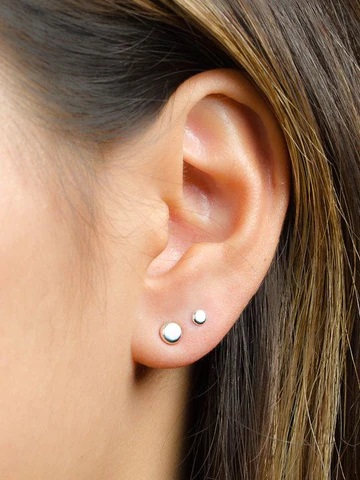
Lobe Piercing
Most people's first piercing is the standard lobe placement. You can expect a lobe piercing to be less painful than other ones.
Your new piercing won't go through any cartilage, making the healing process fairly straightforward. It's an easy-to-maintain piercing but very versatile. You can also opt for an upper-lobe placement, which is a second and/or third piercing slightly above the first one.
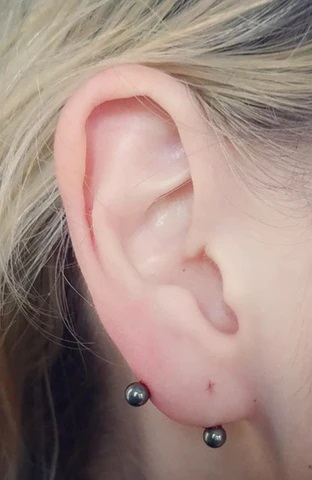
Transverse Lobe Piercing
A barbell gets threaded through your earlobe from side to side with a transverse lobe piercing. A standard lobe placement goes from front to back. You'll end up with a ball on either side of your lobe.

Tragus Piercing
Your ear has a small piece of cartilage that partially covers the ear canal. This is called a tragus placement when you get it pierced. You can wear a stud or a hoop.
You might experience more pain and pressure with a tragus piercing than with a lobe one. That's because the piercer has to go through some cartilage.

Anti-Tragus Piercing
The cartilage ridge right above your earlobe is the anti-tragus region. These types of piercings require a hoop or a barbell. You'll want to check with your piercer that you have enough room for an anti-tragus piercing, especially if your lobes are stretched or you wear other earrings.
Anti-tragus piercings tend to be more painful than other ones since there is a thicker amount of cartilage to go through. You'll also want to keep the area clean and avoid sleeping on the side that got pierced.
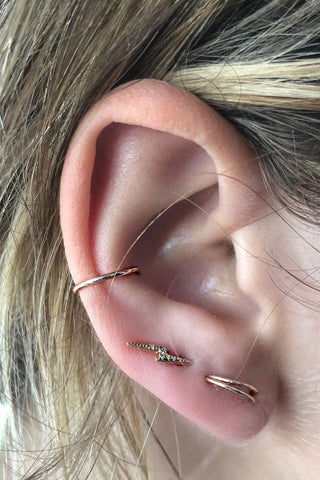
Orbital Piercing
An orbital piercing includes two holes connected by one piece of jewelry. Piercers will usually use a small hoop or a circular barbell.
There are a lot of different placement options to choose from with an orbital piercing. You can opt for the helix to rook or tragus to the conch.
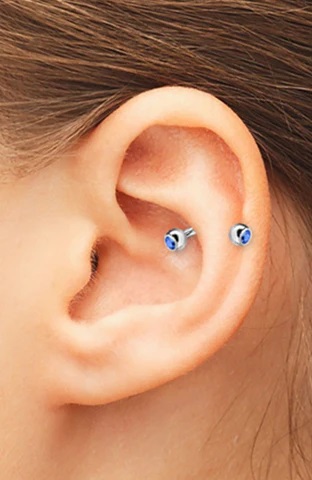
Snug Piercing
Snug piercings are horizontal and sit above the anti-tragus region of your ear. The exit and entrance points of the snug piercing are visible from the front of your ear, making it a unique option.
Keep in mind that not every ear is suitable for a snug piercing. There might not be enough space in that part of your ear, so check with your piercer.
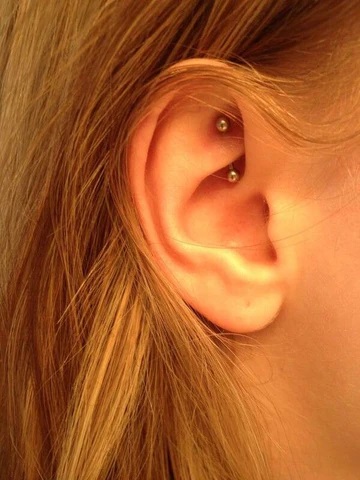
Rook Piercing
A rook piercing goes through your ear's cartilage. The area that gets pierced is in the upper part of your ear, right by the daith placement. The placement is on the ridge between the outer and inner parts of your upper ear.
You can choose a wide range of jewelry, but most people opt for a barbell or hoop. The healing process is a bit longer, typically around six to 12 weeks.

Conch Piercing
A conch piercing can be done on the lower or upper conch part of your ear. This piercing goes through the thickest amount of cartilage, making it more painful than other piercings.
The healing time for a conch piercing can take six to nine months. You'll need to clean it at least two times a day.

Daith Piercing
Daith piercings are done on the cartilage on the inside of your ear. Piercers will typically insert a hoop. Many people get daith piercings to alleviate migraine symptoms.
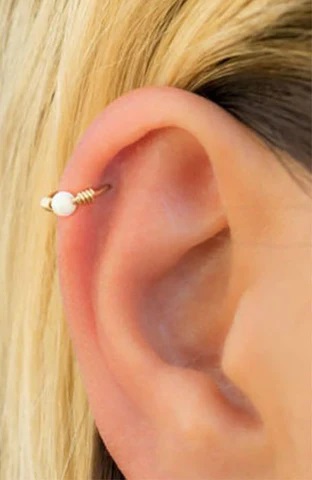
Helix Piercing
Any piercing performed on the upper cartilage of your ear is called a helix piercing. These types of piercings are eye-catching, making them a popular option.
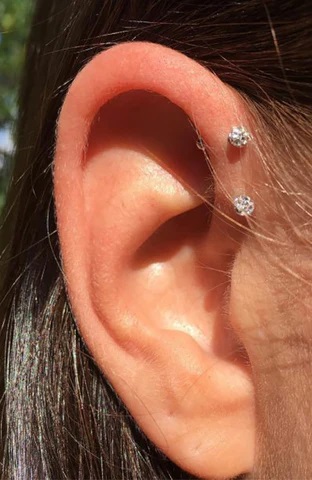
Forward Helix Piercing
Forward helix piercings get placed on the upper and outer cartilage that's closest to your face. The healing time for this piercing is around three to nine months. Once it's healed, it's fairly easy to maintain.

Industrial Piercing
Industrial piercings are any two piercings that get connected by a barbell. They're typically placed on the upper cartilage of your ear. This piercing can be more painful since you're getting pierced twice instead of once.
Shop Our Selection of High-Quality Body Jewelry
Keep in mind when choosing where to get your next ear piercing that everyone's pain threshold is different. Talk with your piercer about any concerns you may have. They'll let you know what to expect and how to care for your piercing.
Body Pierce Jewelry carries a large collection of premium body jewelry for all types of piercings. Shop our collection today.






